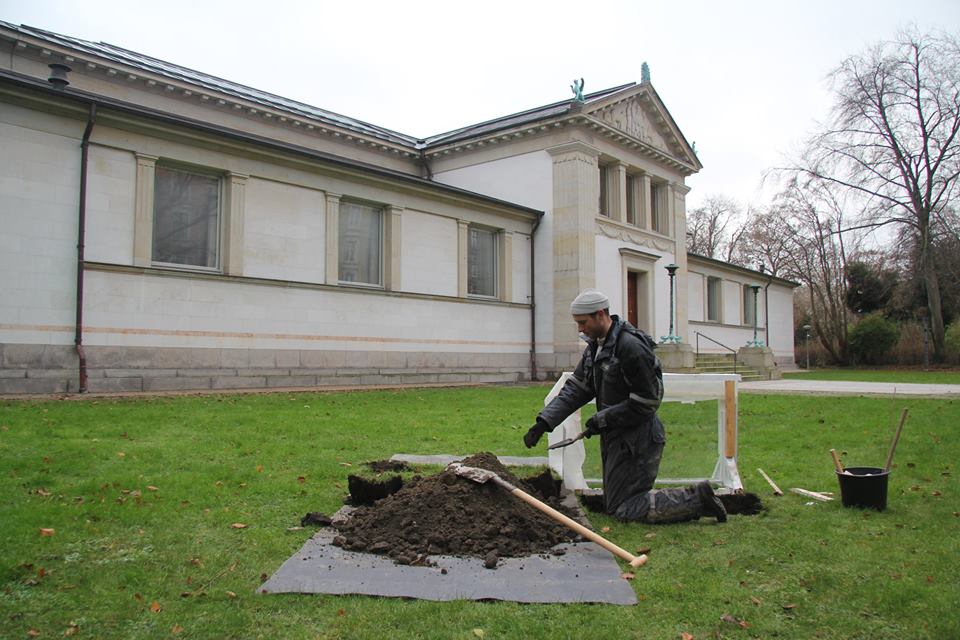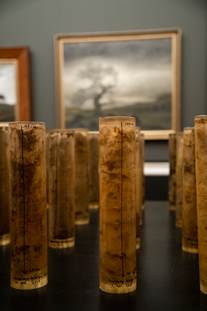A City Curating Reader. Public Art Munich 2018Book release
Spike
Rosa-Luxemburg-Straße 45
10178 Berlin
Wednesday, 30 January, 7.30 pm
Statements & Discussion: Cana Bilir-Meier, Maria Lind, Alexander Koch, Patricia Reed and Joanna Warsza
Artists / Künstler*Innen: Aleksandra Wasilkowska, Alexander Kluge & Sarah Morris, Alexandra Pirici, Anders Eiebakke, Anna McCarthy & Gabi Blum, Ari Benjamin Meyers, Cana Bilir-Meier, Dan Perjovschi, Flaka Haliti & Markus Miessen, Franz Wanner, Jonas Lund, Lawrence Abu Hamdan, Leon Eixenberger, Mariam Ghani, Massimo Furlan, Michaela Melián, Olaf Nicolai, Rudolf Herz & Julia Wahren, Students of the Academy of Fine Arts in Munich, The 9th Futurological Congress/Julieta Aranda & Mareike Dittmer
Contributors / Beitragende: Alexander Koch, Bassam El Baroni, Behzad Khosravi Noori, Bellevue di Monaco: Achim Waseem Seger, Kissi Baumann, Marvis Gabriel & You have to be as cool as Alain Delon; Chantal Mouffe, Chris Fitzpatrick, Cordula Schütz, Daniela Stöppel, Emilie Houdent, Ewa Majewska, Gürsoy Doğtaş, Harry Thorne, Jens Maier-Rothe, Joanna Warsza, Jovana Reisinger, Katja Kobolt, Klasse Florian Matzner & Ann-Jasmin Ullrich, María Inés Plaza Lazo, Maria Lind, Maria Muhle, Mathieu Wellner, Mirela Baciak, Moritz Hollinger, Patricia Reed, Stefanie Peter, Sven Beckstette, Sven Lütticken, Thomas Girst, Thomas Meinecke
What is public in public art? What are the contingencies of working outside of the protection of the institutional walls? What makes city curating? This reader takes Munich as a case study, and documents the projects of PUBLIC ART MUNICH 2018 dealing with political, ideological and economical shifts, spanning from the founding of the Bavarian Soviet Republic in 1919 to the arrival of refugees at the Hauptbahnhof in 2015. It contextualizes art within the broader questions of the grammar of the public sphere and of what constitutes publicness today. It also reflects on the concept of context-specific city curating, performativity and art conceived in minutes rather than square meters. Art projects, conversations and essays plot a narrative of how art can cultivate encounters with the unpredictable, negotiate the uncommonness, and provoke the counter-publics to come.
A City Curating Reader. Public Art Munich 2018Book release
Spike
Rosa-Luxemburg-Straße 45
10178 Berlin
Wednesday, 30 January, 7.30 pm
Statements & Discussion: Cana Bilir-Meier, Maria Lind, Alexander Koch, Patricia Reed and Joanna Warsza
Artists / Künstler*Innen: Aleksandra Wasilkowska, Alexander Kluge & Sarah Morris, Alexandra Pirici, Anders Eiebakke, Anna McCarthy & Gabi Blum, Ari Benjamin Meyers, Cana Bilir-Meier, Dan Perjovschi, Flaka Haliti & Markus Miessen, Franz Wanner, Jonas Lund, Lawrence Abu Hamdan, Leon Eixenberger, Mariam Ghani, Massimo Furlan, Michaela Melián, Olaf Nicolai, Rudolf Herz & Julia Wahren, Students of the Academy of Fine Arts in Munich, The 9th Futurological Congress/Julieta Aranda & Mareike Dittmer
Contributors / Beitragende: Alexander Koch, Bassam El Baroni, Behzad Khosravi Noori, Bellevue di Monaco: Achim Waseem Seger, Kissi Baumann, Marvis Gabriel & You have to be as cool as Alain Delon; Chantal Mouffe, Chris Fitzpatrick, Cordula Schütz, Daniela Stöppel, Emilie Houdent, Ewa Majewska, Gürsoy Doğtaş, Harry Thorne, Jens Maier-Rothe, Joanna Warsza, Jovana Reisinger, Katja Kobolt, Klasse Florian Matzner & Ann-Jasmin Ullrich, María Inés Plaza Lazo, Maria Lind, Maria Muhle, Mathieu Wellner, Mirela Baciak, Moritz Hollinger, Patricia Reed, Stefanie Peter, Sven Beckstette, Sven Lütticken, Thomas Girst, Thomas Meinecke
What is public in public art? What are the contingencies of working outside of the protection of the institutional walls? What makes city curating? This reader takes Munich as a case study, and documents the projects of PUBLIC ART MUNICH 2018 dealing with political, ideological and economical shifts, spanning from the founding of the Bavarian Soviet Republic in 1919 to the arrival of refugees at the Hauptbahnhof in 2015. It contextualizes art within the broader questions of the grammar of the public sphere and of what constitutes publicness today. It also reflects on the concept of context-specific city curating, performativity and art conceived in minutes rather than square meters. Art projects, conversations and essays plot a narrative of how art can cultivate encounters with the unpredictable, negotiate the uncommonness, and provoke the counter-publics to come.


